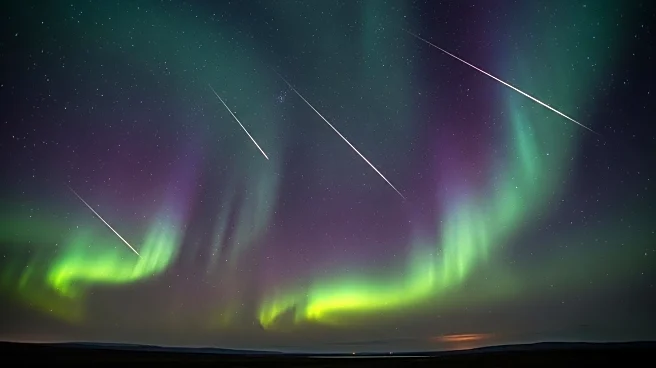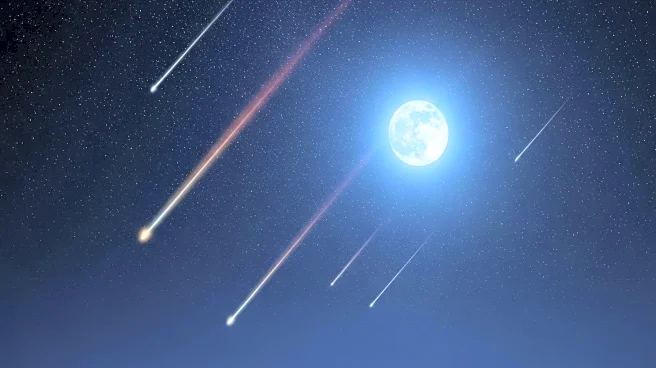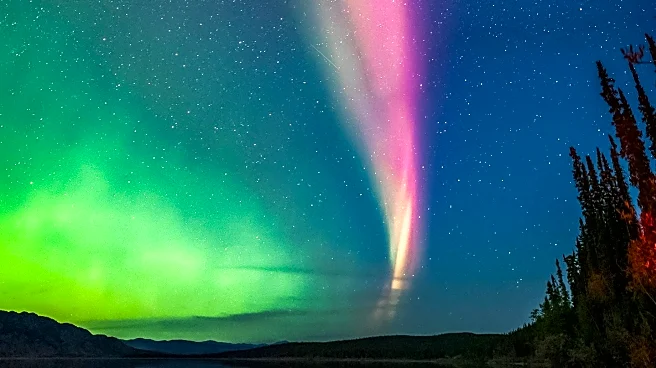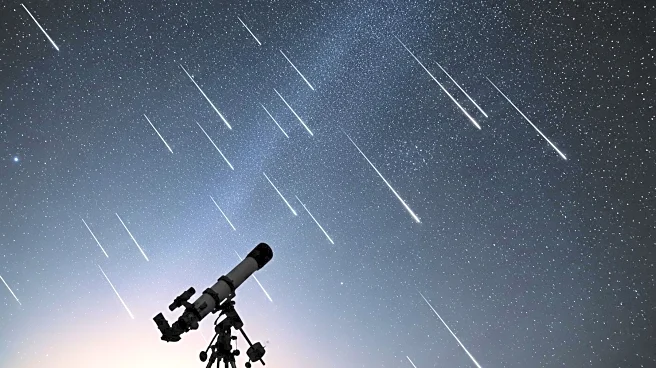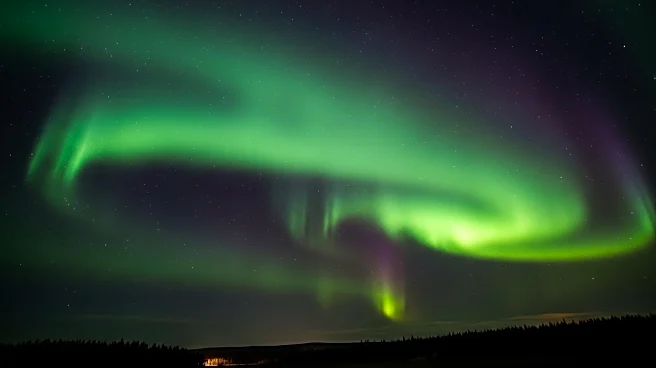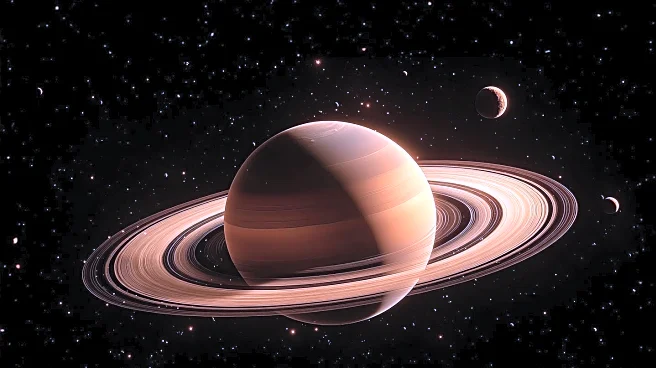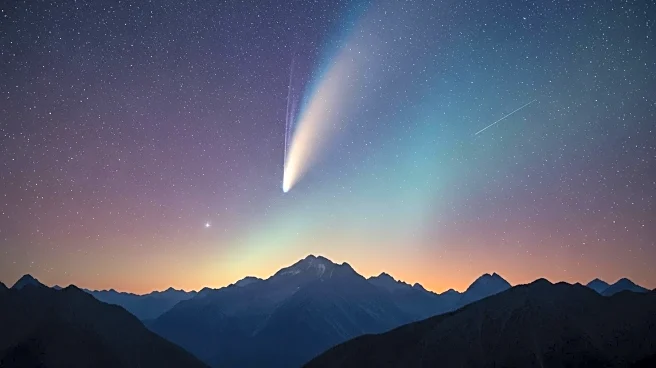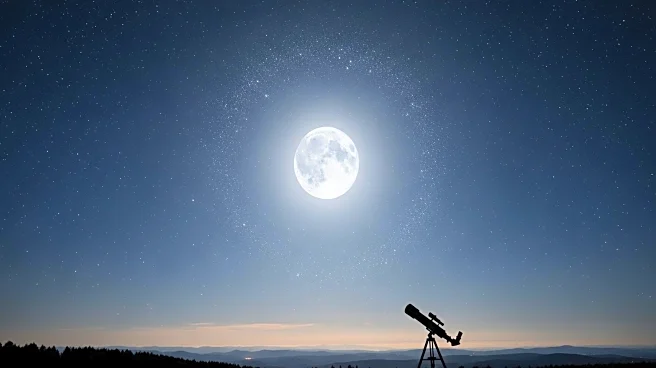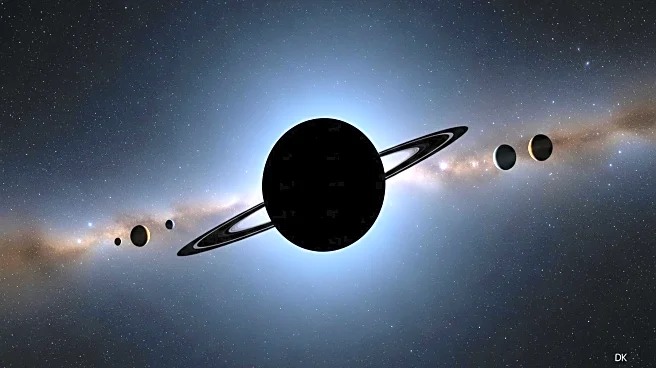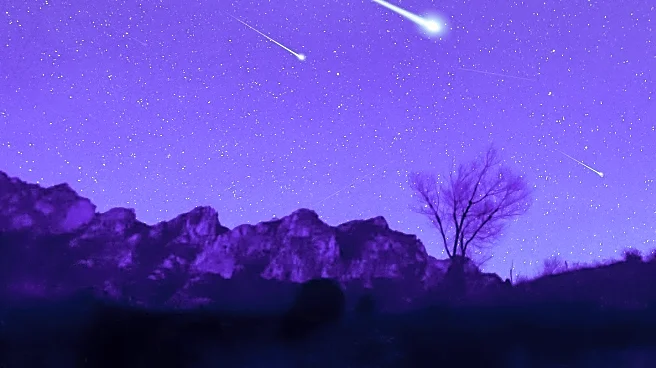What's Happening?
Several celestial events are set to occur on October 3-4, 2025, including minor geomagnetic storms, bright satellite sightings, and planet visibility. A recent solar coronal hole has driven geomagnetic storms, with auroras visible in mid-latitudes. The International Space Station and new Starlink satellite trains will be visible in the sky. Saturn, Mercury, Mars, Venus, and Jupiter will be prominent in the night sky, with the Moon approaching its full 'Harvest' Supermoon phase. Additionally, two new comets, C/2025 A6 (Lemmon) and C/2025 R2 (SWAN), are brightening and will be visible in the pre-dawn sky.
Why It's Important?
These celestial events offer unique opportunities for skywatchers and astronomers to observe and study phenomena such as auroras, satellite movements, and comet appearances. The visibility of planets and the Moon provides educational and recreational opportunities for the public, fostering interest in astronomy and science. The events also highlight advancements in space technology, such as satellite launches, which have implications for global communications and scientific research. Observing these events can enhance public understanding of space weather and its impact on Earth.
What's Next?
Skywatchers are encouraged to plan observations around the bright gibbous Moon, which may wash out faint stars. The Zodiacal Light can be seen in the eastern sky before dawn. For precise viewing times, enthusiasts can refer to NOAA's space-weather updates and NASA's Spot the Station alerts. As the comets approach perihelion, they may become more visible, offering further opportunities for observation and study.

